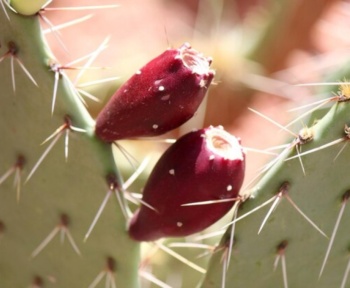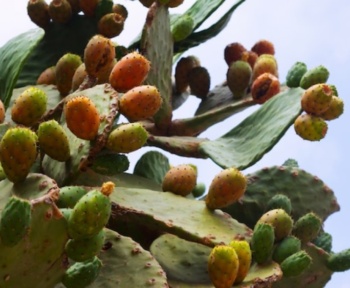Introduction
We all know dried fruits are a convenient, tasty way to snack. Whether you’re popping raisins, dates, or figs into your mouth, they’re packed with nutrients that keep you going. But have you heard of dried cactus fruit? Yeah, that’s right—cactus fruit, also known as prickly pear. It’s slowly gaining popularity, and you might wonder how it compares to the more familiar dried fruits. This blog will explain what makes dried cactus fruit unique, what it brings to the table health-wise, and how it stacks up against the dried fruit classics. By the end, you’ll know whether it’s worth trying or if your tried-and-true dried fruit is still the way to go.
What Is Dried Cactus Fruit?
Dried cactus fruit comes from the prickly pear cactus. It sounds pretty cool. The bright, colorful fruit can be enjoyed raw or dried. When dried, it takes on a chewy texture and a sweet-tart flavor that some say is a cross between watermelon and raspberry. It’s yet to be mainstream, but it’s quickly becoming a favorite for those who want a snack that’s a little different. Dried cactus fruit is packed with fiber and antioxidants and has less sugar than other dried fruits. This might be your new go-to if you want to eat healthier but still love a sweet treat.
Why You Should Try It:
- Antioxidants: Full of antioxidants that protect your cells from damage (hello, healthy skin!).
- Fiber: Helps with digestion and keeps you feeling full.
- Low-sugar: It’s a smart choice if you’re trying to cut back on sugar without sacrificing sweetness.

Common Dried Fruits You Already Know
Before we get too far into the cactus fruit hype, look at some other popular dried fruits you’ve probably already had.
- Raisins: These little guys are packed with potassium and iron, which are great for energy and heart health.
- Dates: Naturally sweet, dates are high in sugar and contain essential vitamins and minerals. They’re like nature’s candy.
- Apricots: These orange beauties are packed with Vitamin A for eye health and immune support.
- Figs: Figs are super fiber-rich, perfect for your digestive health, and keep you regular.
- Cranberries: Best known for supporting urinary health, cranberries are high in antioxidants and Vitamin C.
Nutritional Breakdown: Dried Cactus Fruit vs Other Dried Fruits
Let’s compare quickly to see how dried cactus fruit holds up to some popular dried fruits. Here’s a breakdown of their nutritional values (per 100g):

Notice something? Dried cactus fruit has fewer calories and less sugar than raisins and dates. But it still packs a solid punch in the fiber and potassium departments. If you’re looking to cut back on sugar but still get a decent snack, cactus fruit is a winner. Plus, it’s got that bonus of being hydrated with natural electrolytes, which most other dried fruits lack.
Health Benefits of Dried Cactus Fruit
Dried cactus fruit isn’t just another snack; it has impressive health perks. Here’s why it deserves a spot in your diet:
- Packed with Antioxidants: Cactus fruit is full of betalains. These powerful antioxidants help reduce inflammation and protect cells from damage. Think of it as a little shield for your body.
- Aids Digestion: Cactus fruit’s high fiber content helps keep your digestive system moving. No one wants to feel bloated.
- Blood Sugar Friendly: Cactus fruit has a low glycemic index, so it doesn’t spike blood sugar like other dried fruits. It’s a good choice for people with diabetes or anyone watching their sugar intake.
- Boosts Immunity: The Vitamin C content in cactus fruit helps support your immune system, so you’re better prepared to fend off those nasty colds.
- Hydrating: While it’s no replacement for water, cactus fruit has natural electrolytes that help keep you hydrated, especially after a workout.

Health Benefits of Other Dried Fruits
Now, let’s remember the health benefits of the more well-known dried fruits. Each one has its unique powers:
- Dates: Naturally sweet, dates are packed with potassium and magnesium, which help keep your heart and muscles in shape.
- Raisins: Raisins are high in iron, which helps with energy and prevents anemia, and they’ve got potassium to support heart health.
- Apricots: Loaded with Vitamin A, apricots are great for your eyesight and immune system.
- Figs: Figs are rich in calcium, which helps support bone strength, and they’re a fiber powerhouse, which is fantastic for digestion.
- Cranberries: Cranberries are full of antioxidants and are great for preventing UTIs and supporting urinary health.
Dried Cactus Fruit vs Other Dried Fruits: Which Is Healthier?
Here’s the thing—dried cactus and other dried fruits bring something valuable to the table. But let’s put them side by side and see how they compare:

The big takeaway? Dried cactus fruit is lower in sugar and helps with hydration, thanks to its natural electrolytes. If you’re trying to keep sugar levels in check, it’s a solid choice. Other dried fruits, like raisins and dates, tend to be higher in sugar but are still packed with essential vitamins and minerals. It’s all about balance.
How to Enjoy Dried Cactus Fruit and Other Dried Fruits
The best part about dried fruits? They’re super versatile. Here’s how you can use them:
- Breakfast: Add dried cactus fruit, raisins, or apricots to your oatmeal or yogurt for a leisurely, nutritious breakfast.
- On-the-Go Snacks: For a mid-afternoon pick-me-up, pack a handful of dried cactus fruit, figs, or dates in your bag.
- Smoothies: Throw a handful of your favorite dried fruits into a smoothie for extra fiber and sweetness.
- Salads: Top your salad with dried apricots or figs for a sweetness that complements the greens.
- Baking: For a natural sweet kick, add raisins, dates, or dried apricots to cookies, muffins, or cakes.

Recipe Idea:
Dried Cactus Fruit Energy Bars:
- Blend dried cactus fruit, oats, almonds, and a little honey.
- Press the mixture into a pan and refrigerate.
- Slice into bars for a quick, healthy snack.
What Experts Think About Dried Cactus Fruit and Other Dried Fruits
Don’t just take my word for it—here’s what the experts have to say:
- Dietitian’s Take: “Dried cactus fruit is a great option for those looking to boost fiber intake. Plus, its low sugar content makes it a great snack for diabetics.“
- Chef’s Opinion: “I love how the sweet-tart flavor of cactus fruit can balance out savory dishes or add a twist to desserts. It’s super versatile!”
Tips for Buying and Storing Dried Fruits
When you’re buying dried fruit, here are a few things to keep in mind:
- Go for Minimal Processing: Look for varieties without added sugars or preservatives.
- Choose Organic: Opt for organic dried fruits—they’re cleaner and often healthier.
- Storage: Keep dried fruits in an airtight container and store them in a cool, dry place to keep them fresh longer.
Common Myths About Dried Fruits
There are a few misconceptions about dried fruits that I want to clear up:
- Myth 1: “Dried fruits are just empty calories.”
- Truth: Dried fruits like cactus fruit, dates, and figs are nutrient-dense, meaning they provide plenty of vitamins, fiber, and antioxidants.
- Myth 2: “All dried fruits are high in sugar.”
- Truth: While many dried fruits can be high in sugar, cactus fruit is lower than most, making it a good choice if you’re trying to cut down on sugar.
Final Thoughts: Which Is Better for You?
So, what’s the verdict? Dried cactus fruit has advantages, especially if you want to reduce sugar intake while still getting a boost of fiber. But pay attention to the classics. Raisins, dates, apricots, and figs have plenty to offer, from energy boosts to heart health benefits.
Ultimately, the best choice depends on your goals. For hydration and low sugar, cactus fruit is a great pick. You might reach for dates or apricots for energy and a dose of Vitamin A. The key is variety—mixing up your dried fruit choices gives you various health benefits.
Final Tip: Try incorporating dried cactus fruit into your daily snacks. It’s a fun, healthy way to add variety and get a nutritional boost.
By experimenting with dried cacti and other dried fruits, you can make healthy eating a fun and flavorful part of your day.
FAQs
Dried cactus fruit has less sugar than fruits like raisins or dates. It’s also packed with antioxidants, which help reduce inflammation and has natural electrolytes to keep you hydrated.
Dried cactus fruit is a good option for people with diabetes when eaten in moderation. It is lower in sugar than other dried fruits and doesn’t cause big spikes in blood sugar.
It tastes sweet and tangy, a bit like watermelon mixed with raspberries. It’s chewy like most dried fruits but has a unique flavor.
You can find it in health food stores, online shops like Amazon, or sometimes at farmers’ markets. Stores that sell exotic fruits might also carry it.
Add it to trail mix, yogurt, oatmeal, or salads. It also gives recipes like muffins or cookies a sweet and tangy flavor.






